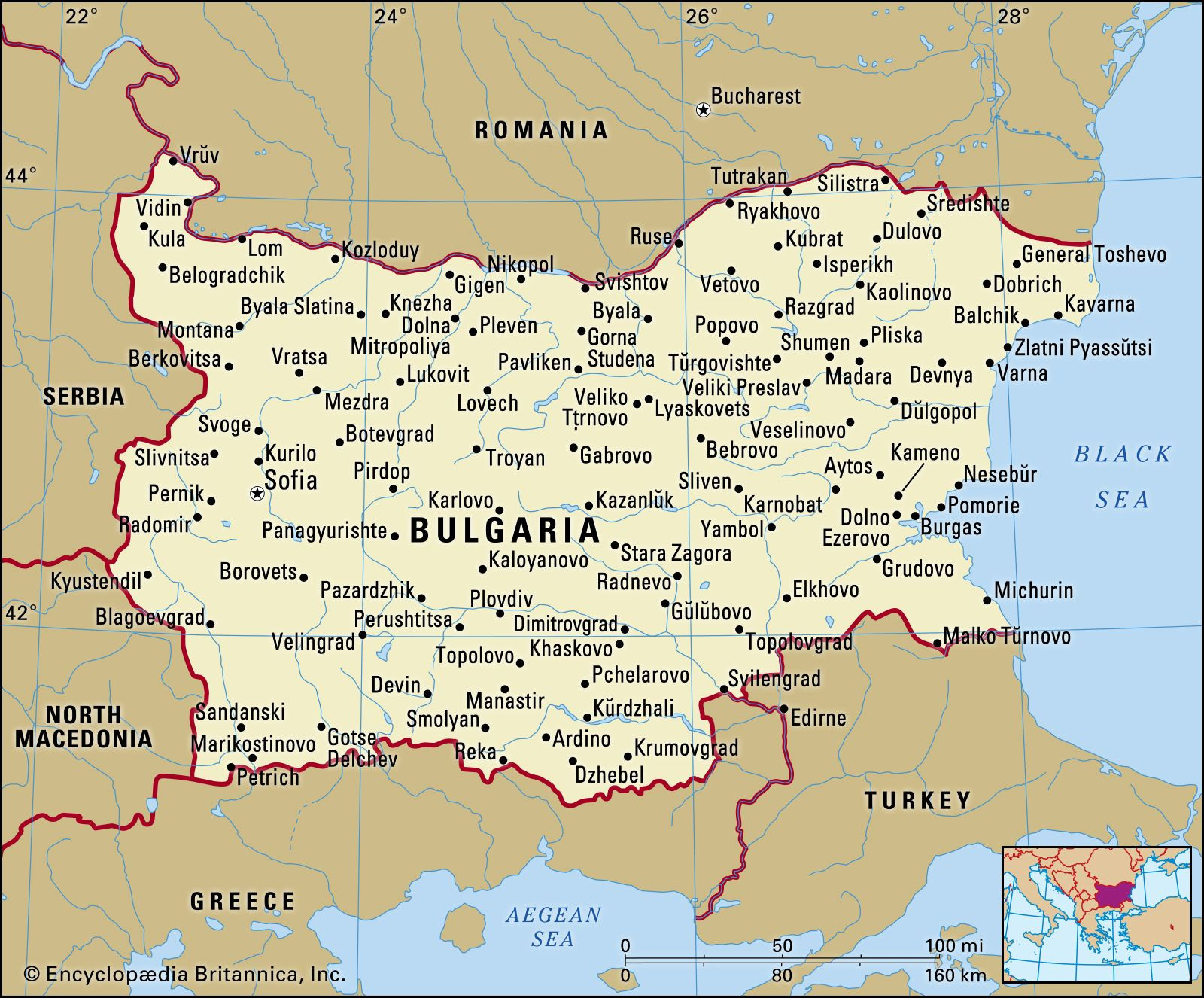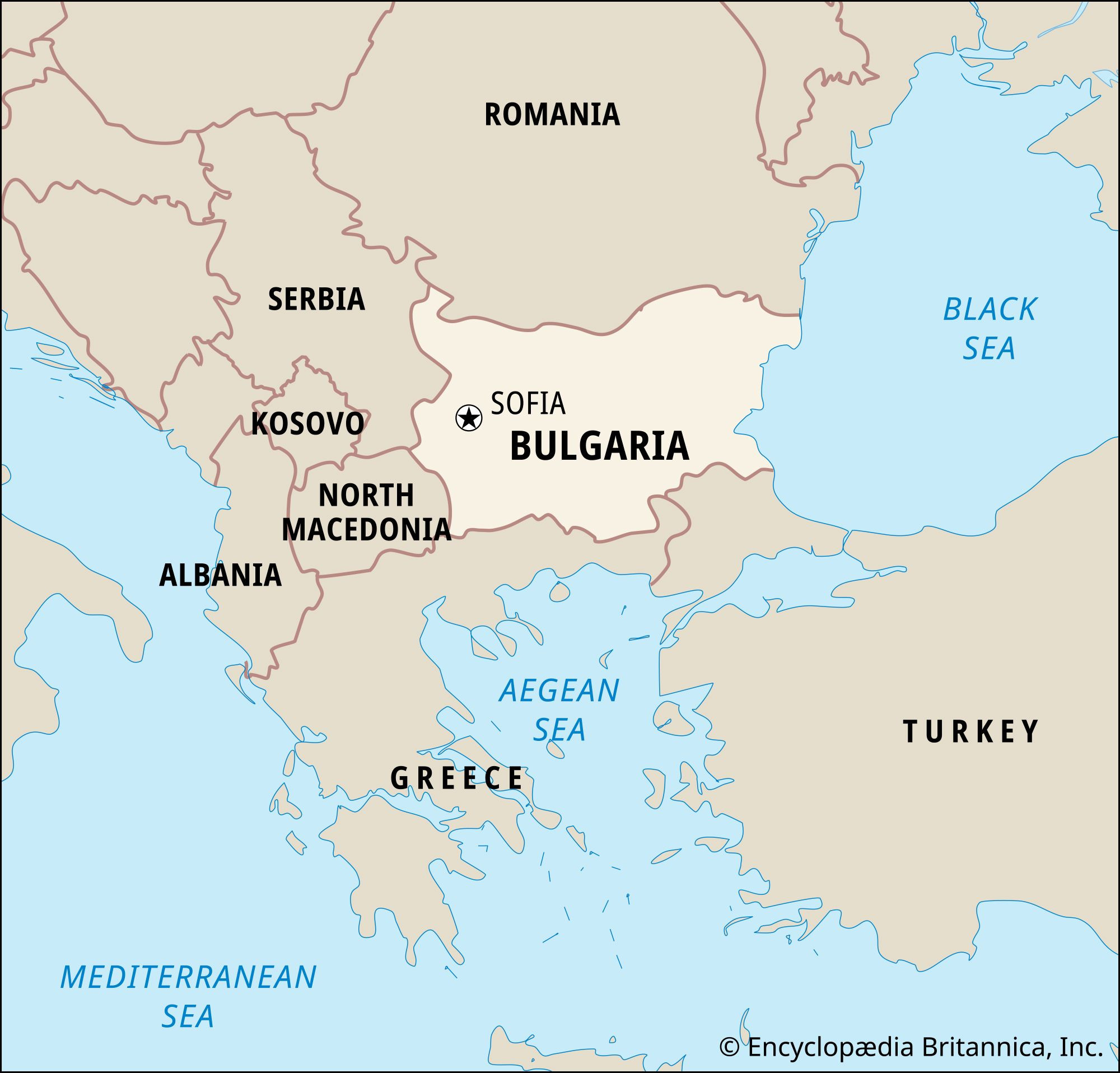Bulgaria, a country brimming with history, culture, and stunning landscapes, often sparks curiosity about its precise location. If you’ve ever wondered, “Bulgaria Where Is it located?” you’re in the right place. Nestled in Southeastern Europe, Bulgaria occupies the eastern part of the Balkan Peninsula, a region known for its rich tapestry of civilizations and crossroads of cultures. This puts Bulgaria at a fascinating geographical intersection, bridging Europe and Asia, and carrying a legacy shaped by ancient empires and modern aspirations.
 Bulgaria
Bulgaria
A Crossroads of Continents: Bulgaria’s Strategic Position
Bulgaria’s geographical position has been pivotal throughout history. Situated on the Balkan Peninsula, it serves as a natural bridge connecting Northern and Eastern Europe to the Mediterranean basin, and Western and Central Europe to the Middle East. This strategic location has made Bulgarian lands a thoroughfare for trade, migration, and cultural exchange for millennia. Even before the establishment of the Bulgarian state in the 7th century, the powerful empires of ancient Rome, Greece, and Byzantium recognized the area’s importance, leaving indelible marks on the region’s cultural and historical landscape.
 Bulgaria
Bulgaria
A world data locator map pinpointing Bulgaria’s location in Europe, emphasizing its southeastern European positioning.
From Ottoman Rule to Modern Europe: Bulgaria’s Journey
After centuries under Ottoman rule, Bulgaria emerged as an independent nation in the late 19th century. The 20th century presented its own set of challenges, with Bulgaria navigating through world wars and eventually finding itself within the sphere of the Soviet Union during the Cold War era. This period profoundly influenced Bulgarian society, impacting its economy, politics, and culture. However, the winds of change swept through Eastern Europe in the late 1980s and early 1990s, and Bulgaria embarked on a new path towards democracy and Western integration. Today, Bulgaria is firmly oriented towards the West, evidenced by its membership in NATO since 2004 and the European Union since 2007. Its strong trade ties with EU member states underscore its commitment to European partnerships.
Bulgaria’s Diverse Landscape: From Mountains to the Black Sea
Bulgaria’s appeal isn’t solely rooted in its history and location; the country boasts a remarkable variety of scenery within its borders. Rugged mountains provide breathtaking vistas and opportunities for outdoor adventures, while the inviting Black Sea coast offers relaxing beaches and vibrant resorts. This diverse landscape contributes to Bulgaria’s unique cultural blend, a fusion of Eastern and Western influences that is reflected in its cuisine, architecture, and religious traditions.
Sofia, the capital city, though situated in western Bulgaria, holds a central position within the Balkan region both geographically and culturally. As the largest city in Bulgaria, Sofia is a significant urban center, dwarfing other major cities like Plovdiv and Varna in population. Bulgarian writer Yordan Radichkov aptly described Sofia’s location as the “universal core of Bulgaria,” positioned at the crossroads of the ancient Silk Road connecting East and West, and a major migratory bird route, highlighting Bulgaria’s enduring role as a point of convergence.
Bordering Countries and Key Geographical Features
Bulgaria is nearly rectangular in shape and shares borders with several countries. To the north, the Danube River largely defines the border with Romania. The Black Sea forms its eastern boundary, offering crucial access and coastline. To the south, Bulgaria is bordered by Turkey and Greece, while North Macedonia lies to the southwest, and Serbia to the west. Sofia, the capital, is nestled in a mountainous basin in the western part of the country.
Relief and Topography: A Land of Contrasts
A physical features map of Bulgaria, showcasing its diverse topography, including mountains, plains, and river systems.
Bulgaria’s landscape is surprisingly diverse for its size. Lowland plains give way to mountainous terrain, carved by deep river gorges and interspersed with upland basins like the Sofia basin. Geographically, Bulgaria can be divided into three east-west zones: North Bulgaria, encompassing the Danubian Plain and the Balkan Mountains; South Bulgaria, dominated by the Rila-Rhodope Massif; and a transitional zone bridging the two.
North Bulgaria: The Danubian Plain and Balkan Mountains
The northern edge of Bulgaria, except for a small section, is delineated by the Danube River. The Bulgarian side of the Danube is characterized by steep banks, contrasting with the Romanian side’s swamps and lagoons. South of the Danube, stretching to the Balkan Mountains, lies the fertile and undulating Danubian Plain. This plain, with an average elevation of 178 meters, covers a significant area of approximately 31,600 square kilometers. Several rivers originating in the Balkan Mountains flow northwards across the plain to join the Danube. The Balkan Mountains themselves form the southern boundary of the Danubian Plain, featuring rounded peaks averaging 722 meters in height, with Mount Botev, the highest peak, reaching 2,376 meters.
A scenic view of steppe grasslands at Point Kaliakra, Bulgaria, illustrating the Black Sea coastline and North Bulgaria’s landscape.
Transitional Region: A Zone of Complex Relief
South of the Balkan Mountains lies a transitional region characterized by a complex and varied topography. Block faulting has shaped this area, creating the Sredna Mountains, the Vitosha Massif near Sofia, sheltered basins, and the Upper Thracian and Tundzha lowlands. This geological activity has resulted in a diverse landscape with both mountainous and lowland characteristics.
South Bulgaria: Majestic Mountains and Glacial Lakes
Southern Bulgaria is dominated by a significant mountain massif. This includes the Rhodope Mountains, known as Rodopi in Bulgarian and Rhodopis in Greek, reaching 2,190 meters at Golyam Perelik Peak. The Rila Mountains are also located here, boasting Musala Peak at 2,925 meters, the highest point not only in Bulgaria but in the entire Balkan Peninsula. The Pirin Mountains, with Vikhren Peak at 2,914 meters, and the Belasitsa Mountains along the frontier, complete this mountainous region. These impressive ranges are characterized by sharp peaks, pine forests, and, particularly in the Rila and Pirin mountains, hundreds of glacial lakes, creating some of Bulgaria’s most stunning natural scenery.
Coastal Region: Bulgaria’s Black Sea Shore
Bulgaria’s eastern edge is defined by a narrow Black Sea coastal region, running north to south. While the coastline is relatively straight with few bays, it features excellent natural harbors at Varna and Burgas. Extensive sandy beaches are a major draw, attracting visitors to numerous picturesque seaside resorts along the Black Sea.
Drainage and Water Resources: Rivers and Lakes
 Danube River
Danube River
A map of the Danube River basin and its drainage network, highlighting its importance to Bulgaria and surrounding regions.
Bulgaria’s drainage system is intricate, featuring numerous relatively short rivers, with the exception of the Danube. Major rivers include the Maritsa (Marica), Iskŭr, Struma, Arda, Tundzha, and Yantra. Over half of Bulgaria’s river runoff drains into the Black Sea, while the remainder flows into the Aegean Sea.
Bulgaria is also dotted with numerous lakes, which can be coastal, glacial, structural, or karst in origin. The coastal lakes around Varna and Burgas, glacial lakes in the southern mountains, and other lake types contribute to the country’s diverse aquatic landscapes. Furthermore, Bulgaria is rich in mineral springs, with approximately 500 sources, half of which are warm or hot, reaching a remarkable 103 °C at Sapareva Banya. Numerous dams have been constructed in the mountains, managing water resources and creating reservoirs.
Soils: Fertile Grounds for Agriculture
Bulgaria’s varied environment has resulted in a diverse range of soil types, grouped into three main regions. Northern Bulgaria is characterized by fertile black-earth soils known as chernozems, as well as gray forest soils. Southern Bulgaria predominantly features acidic forest soils, along with chernozem-smolnitzas, a modified type of chernozem. The high mountain regions have brown forest soils, dark mountain forest soils, and mountain meadow soils. These varied soil types support a range of agricultural activities across the country.
Climate: Temperate with Mediterranean Influences
Bulgaria enjoys a moderate continental climate across most of the country, with Mediterranean influences becoming more pronounced in the south. The average annual temperature is around 10.5 °C, but temperature extremes can range from −38 °C to 45 °C. Annual precipitation varies significantly, from about 450 mm in the northeast to over 1190 mm in the higher mountains. Snowfall is common in the lowlands from mid-October to mid-May, with an average of 25–30 days of snow cover annually. Hailstorms are most frequent between May and August.
Plant and Animal Life: Biodiversity and Conservation
A captivating image showcasing various vulture species in Bulgaria, including Griffon and Egyptian vultures, feeding in the Rhodope Mountains, highlighting Bulgaria’s rich biodiversity.
Bulgaria’s location at the intersection of several Eurasian biogeographic zones contributes to its rich biodiversity. During the Pleistocene Epoch, the region served as a refuge, allowing species to thrive and even expand from the north. Influences from the Asian steppes also contributed to the mix of plant and animal life. The flora and fauna are largely Central European, with Arctic-alpine characteristics in the high mountains, steppe species in the northeast and southeast, and sub-Mediterranean and Mediterranean species in the south.
Rila National Park serves as a vital sanctuary for Bulgarian wildlife, including susliks, rock partridges, chamois, and various bird species. It hosts a significant portion of Bulgaria’s nesting birds and invertebrate species, as well as fish like the Balkan trout and common minnow.
Recognizing the importance of its natural heritage, the Bulgarian government has implemented conservation measures to protect its environment. The Srebarna Nature Reserve, a UNESCO World Heritage site and crucial bird sanctuary on the Danube River, exemplifies Bulgaria’s commitment to preserving its natural treasures.
In conclusion, Bulgaria’s location in Southeastern Europe, at the heart of the Balkan Peninsula, is fundamental to understanding its history, culture, and diverse landscapes. From its strategic position as a bridge between continents to its varied topography and rich biodiversity, Bulgaria offers a wealth of discovery for those curious about “bulgaria where is it”.

